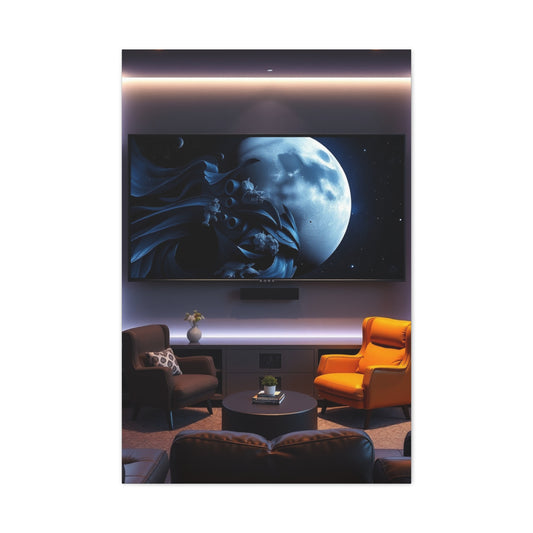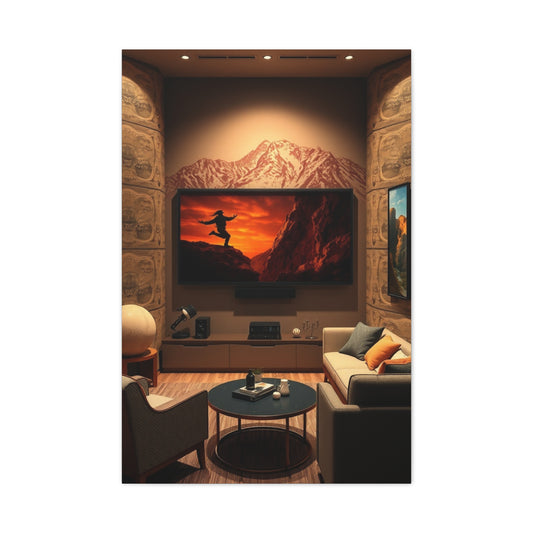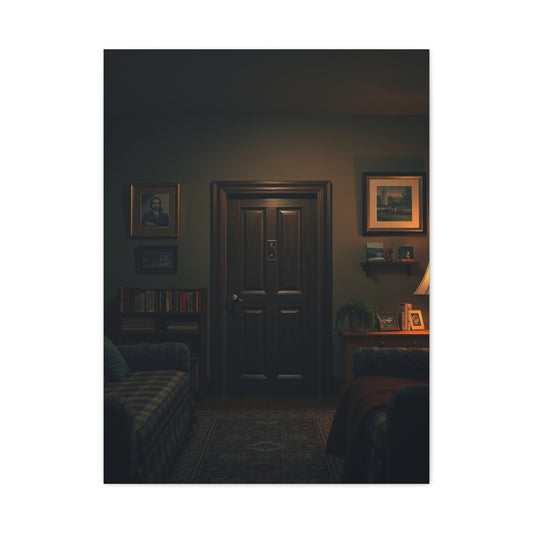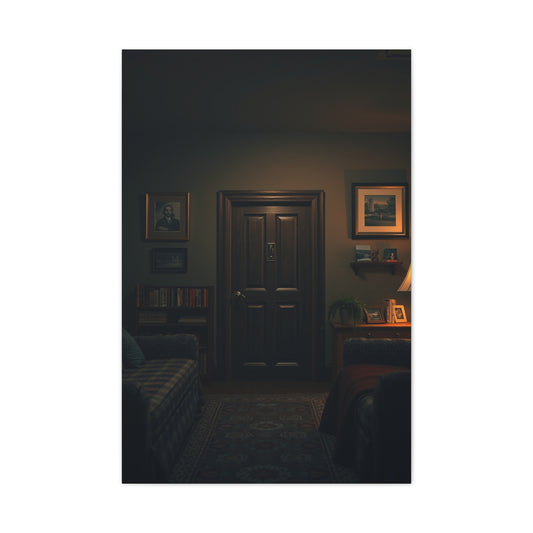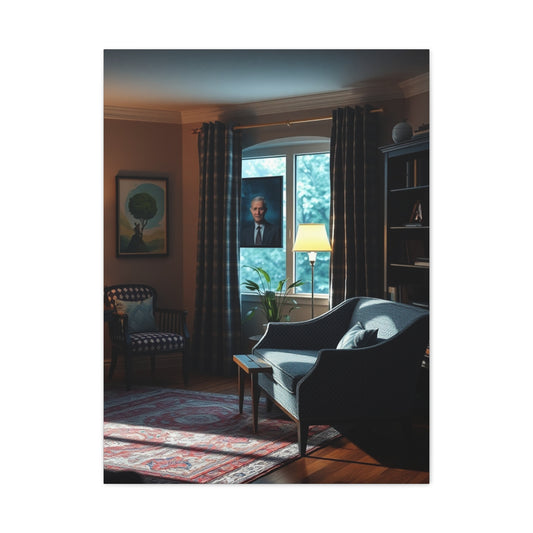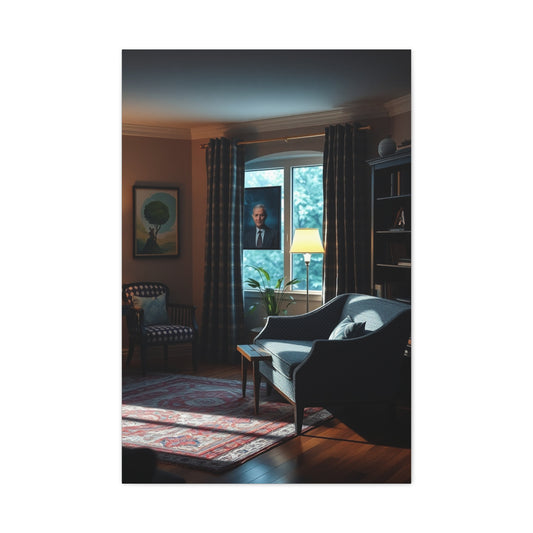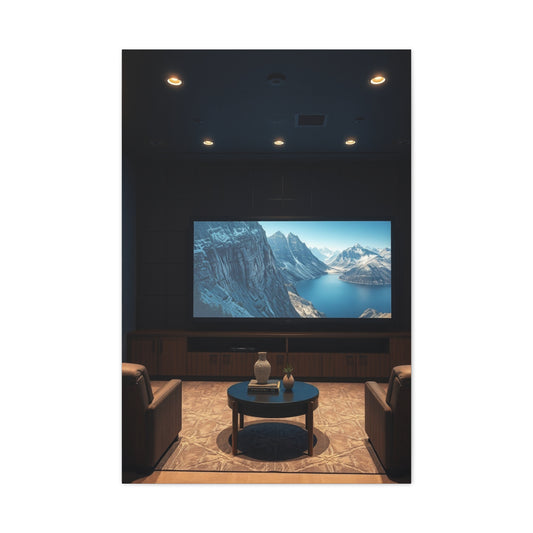Bedroom table lamps have evolved from simple utilitarian objects to essential decor elements that can transform the entire ambiance of a room. Once viewed merely as sources of light, these lamps now serve a dual purpose: providing functional illumination while enhancing the aesthetic appeal of a space. Choosing the right table lamp requires careful consideration of both practical needs and design preferences, as it can have a significant impact on the overall feel and atmosphere of the bedroom.
Lighting in a bedroom is more than just a necessity; it shapes the mood of the space, influences sleep quality, and can even impact mental well-being. Soft, warm lighting helps the mind unwind, signaling the body that it is time to relax. In contrast, overly bright or harsh lighting can create tension and disrupt a sense of tranquility. This is why table lamps designed specifically for bedrooms focus on balancing illumination with ambiance, allowing for a comfortable, soothing environment that supports relaxation.
When selecting a bedroom table lamp, one of the first factors to consider is size and proportion. The lamp should complement the scale of the furniture it accompanies, particularly the bedside table and bed. A lamp that is too tall or bulky can overwhelm a small bedside table and make the space feel cramped, while a lamp that is too short may fail to provide adequate light for reading or other tasks. The height of the lamp should ideally align with the height of the headboard or slightly above eye level when seated in bed. This ensures the light is both functional and visually balanced.
Design plays a crucial role in making a bedroom table lamp a statement piece. While traditional lamps were often simple and utilitarian, modern designs range from minimalistic forms to artistic sculptural creations. Sleek, minimalistic lamps with clean lines and neutral tones work well in contemporary bedrooms, creating an understated elegance that enhances the decor without drawing excessive attention. These lamps often feature smooth finishes, geometric shapes, or transparent bases that allow light to interact subtly with the surrounding space, adding depth and sophistication.
On the other end of the spectrum, sculptural lamps act as works of art. Their intricate forms, bold materials, and innovative designs transform the bedroom into a curated gallery-like environment. Materials such as marble, glass, metal, or ceramic are commonly used to craft bases that are both visually striking and tactilely engaging. Some lamps incorporate organic shapes inspired by nature, such as flowing curves or textured surfaces reminiscent of stone or wood grains, bringing a sense of tranquility and grounding to the room.
The lamp shade is equally important in defining both style and functionality. Shades can range from classic cylindrical or cone shapes to unique geometric or abstract designs. A neutral-colored shade, such as white, cream, or beige, balances more elaborate bases while diffusing light softly, creating a warm and inviting glow. Bold-colored or patterned shades can serve as accent pieces, introducing vibrancy and personality to the bedroom. The material of the shade also affects the quality of light, with fabrics like linen or silk producing soft, filtered illumination, while glass or metal shades may create sharper, more focused beams.
Functionality is another key consideration. Bedroom lamps are often used for reading, relaxing, or performing tasks such as writing or working from bed. Adjustable lamps with swiveling arms, flexible necks, or dimmable settings allow users to direct light precisely where it is needed. Some modern designs integrate smart features, such as touch controls, wireless charging, or app-based dimming, giving users complete control over brightness, color temperature, and timing. These features combine convenience with aesthetic appeal, making the lamp both practical and stylish.
The placement of bedroom table lamps also influences their effectiveness. Symmetrical arrangements with matching lamps on either side of the bed create a harmonious and balanced look, ideal for master bedrooms or shared spaces. Alternatively, a single lamp on one side of the bed can function as a focal point, drawing attention to a specific corner or highlighting a piece of furniture. Lamps can also be paired with other light sources, such as wall sconces or ceiling fixtures, to create layered lighting that enhances the ambiance and functionality of the room.
Material selection is essential not only for aesthetics but also for durability and maintenance. Metals such as brass, copper, or stainless steel offer a polished, modern appearance while being sturdy and long-lasting. Wooden bases add warmth and texture, bringing a natural, grounded feel to the space. Glass or crystal bases provide a sense of elegance and transparency, reflecting light and creating visual interest. Combining materials, such as a wooden base with a metal accent or a glass shade with a ceramic base, can produce striking contrasts that elevate the lamp to a design statement.
The color palette of bedroom lamps should harmonize with the rest of the room decor. Neutral colors are versatile and timeless, easily blending with a wide range of interior styles. Metallic finishes like gold, silver, or bronze introduce luxury and sophistication, while vibrant colors such as turquoise, cobalt blue, or emerald green add bold accents that energize the space. Coordinating lamp colors with other bedroom accessories, such as cushions, throws, or rugs, creates a cohesive and visually appealing environment.
Lighting intensity and quality are also vital. A lamp that provides too little light may be insufficient for reading, while a lamp that is too bright can disrupt the relaxing atmosphere of a bedroom. Soft, warm white light is ideal for creating a calming environment, while adjustable brightness levels allow users to tailor the illumination to specific activities. The direction of the light should be considered as well, with focused task lighting for reading and diffused ambient lighting for general relaxation.
Beyond functionality, bedroom table lamps contribute to the overall mood and personality of the space. They can evoke different emotional responses depending on their design, material, and light quality. A sleek, minimalist lamp may convey modern sophistication, while a lamp with an organic wooden base might create a sense of warmth and connection to nature. Sculptural or artistic lamps inspire creativity and conversation, reflecting the personality and taste of the room’s occupant.
In addition to individual lamps, lamp sets and coordinated designs can further enhance the bedroom. Matching pairs on bedside tables create symmetry and balance, reinforcing a sense of order and calm. Contrasting lamps with complementary shapes or materials can produce a dynamic and eclectic aesthetic, allowing for experimentation and personalization. Choosing a lamp that resonates with personal taste ensures that the bedroom feels curated, comfortable, and uniquely yours.
Investing in a high-quality bedroom table lamp is worthwhile, as it combines long-term functionality with enduring style. A thoughtfully selected lamp can evolve with changing decor trends, serving as a timeless addition that enhances the bedroom for years. By prioritizing design, materials, lighting quality, and placement, bedroom table lamps can transcend their practical purpose, becoming integral components of a room’s identity and charm.
Bedroom table lamps are far more than simple sources of light. They are functional tools, decorative accents, and expressions of personal style. Selecting the right lamp involves careful consideration of scale, design, material, lighting quality, and placement. From sleek, minimalistic forms to sculptural artistic creations, bedroom table lamps offer endless possibilities for enhancing ambiance, functionality, and visual appeal. By combining aesthetics with practicality, these lamps create a warm, inviting, and stylish environment that elevates the overall bedroom experience.
Sleek and Suave Designs for Modern Bedrooms
Modern bedrooms call for table lamps that reflect simplicity, elegance, and functionality. Sleek designs focus on clean lines, neutral colors, and minimal ornamentation, creating a sense of calm and sophistication. These lamps are perfect for contemporary interiors where understated aesthetics take center stage, complementing furniture, walls, and bedding without overwhelming the room.
The appeal of minimalistic bedroom lamps lies in their ability to provide essential lighting while maintaining visual harmony. Compact, streamlined forms make them suitable for small side tables or nightstands, ensuring that surface space is maximized. This is particularly important in guest rooms or urban apartments where space is at a premium. A lamp with a slim base or transparent body can give the illusion of more space while still offering sufficient illumination for reading or relaxation.
Materials play a crucial role in achieving the sleek modern aesthetic. Metals like brushed aluminum, stainless steel, or matte black finishes convey sophistication and durability. Glass bases add an airy, almost ethereal quality, reflecting light subtly and creating depth in the room. Ceramic or stone bases provide texture while maintaining a minimalist silhouette. The choice of material can transform a simple lamp into a visual anchor for the bedside table, even without intricate design details.
The lamp shade is another defining feature of sleek designs. Classic cylindrical or conical shades in white, cream, or soft grey diffuse light evenly, producing a gentle glow that is easy on the eyes. This type of illumination is ideal for winding down at night, reading in bed, or creating an ambient atmosphere that complements other bedroom lighting. Shades in muted tones also allow the base to stand out, highlighting the quality of materials and the purity of the design.
Adjustable features are often incorporated into modern lamps to enhance functionality without sacrificing style. Swiveling necks, pivoting arms, and dimmable light options allow precise control over the direction and intensity of light. These practical elements ensure that the lamp is suitable for multiple tasks, whether it’s reading, journaling, or creating mood lighting for a relaxing evening. Smart technology integration, such as touch sensors or wireless controls, further enhances usability, allowing the user to adjust lighting effortlessly while maintaining a minimalist appearance.
Proportion and placement are key when styling sleek bedroom lamps. Ideally, the lamp height should align with or slightly exceed the height of the bed’s headboard, providing adequate light for tasks while maintaining visual balance. Matching pairs on either side of the bed create symmetry and reinforce a polished, contemporary look. Alternatively, a single, striking lamp on a side table can act as a focal point, drawing attention without disrupting the overall harmony of the room.
The versatility of sleek designs allows them to complement a wide range of bedroom styles. Scandinavian interiors benefit from minimalistic lamps in light wood, neutral tones, and soft textures, promoting warmth and calm. Industrial-style bedrooms pair well with metal or matte black finishes, emphasizing clean geometry and functional elegance. Even eclectic bedrooms can incorporate sleek lamps to provide contrast, grounding other colorful or patterned elements with their understated form.
Lighting color and intensity are crucial considerations for modern lamps. Warm white tones create a cozy, inviting environment, ideal for unwinding in the evening. Adjustable LEDs allow the user to switch between soft ambient lighting and brighter task-oriented illumination, accommodating various needs throughout the day. The lamp’s ability to control brightness ensures that it remains both functional and aesthetically pleasing, enhancing comfort without compromising style.
Surface integration also matters in sleek designs. A lamp should complement the texture and finish of the bedside table. Glass or acrylic bases pair beautifully with polished or lacquered tables, while metal or ceramic bases harmonize with wood or matte finishes. These subtle design decisions ensure that the lamp feels like a cohesive part of the bedroom decor rather than an isolated accessory.
Color coordination is another essential factor. Neutral colors such as white, grey, black, or beige maintain versatility, blending seamlessly with bedding, curtains, and walls. Metallic finishes, whether silver, gold, or bronze, introduce an element of sophistication and luxury without overpowering the design. Pops of muted color in a shade or base can inject personality into a modern bedroom, acting as an accent without disrupting the overall minimalist theme.
Sleek bedroom lamps also focus on ergonomics. A well-designed lamp should be easy to operate, with intuitive switches or touch-sensitive controls. Cord management is equally important; concealed or neatly routed cords preserve the clean lines and uncluttered aesthetic. Some contemporary lamps also incorporate additional functionality, such as built-in wireless chargers or storage compartments, combining practicality with style and further enhancing the utility of the bedside space.
Lighting plays a psychological role in modern bedrooms. The soft glow of a minimalist lamp can create a sense of calm and relaxation, reducing stress and promoting better sleep. Adjustable lamps allow customization of lighting to suit different moods—brighter for focus or reading, softer for unwinding or romantic ambiance. Sleek designs maximize this psychological benefit by providing efficient illumination while maintaining a tranquil visual presence that does not overstimulate the senses.
Materials and finishes in sleek bedroom lamps are also chosen for durability and maintenance ease. Metals with powder-coated finishes resist scratches and tarnishing, ensuring longevity. Glass and acrylic surfaces are simple to clean, reflecting light effectively to enhance room brightness. Ceramic and stone bases, while slightly heavier, offer stability and a sense of permanence, creating a grounded feel in the bedroom. These materials also age gracefully, maintaining their aesthetic appeal over time without significant maintenance.
Lighting direction and diffusion are critical aspects of modern lamp design. Shades and bases are engineered to provide optimal light spread, reducing harsh shadows while creating a balanced glow. Some lamps feature layered diffusion, where light passes through multiple materials to soften and scatter, producing a calming effect ideal for bedrooms. Adjustable arms or rotating heads allow light to be directed precisely, supporting reading, task work, or accent lighting.
Sleek lamps also encourage experimentation with bedroom styling. Pairing them with neutral bedding, subtle textures, and minimalistic furniture creates a cohesive and serene environment. Alternatively, combining a sleek lamp with bold artwork or a statement rug introduces visual contrast while preserving a modern aesthetic. The versatility of these lamps allows them to evolve with changing decor trends, offering long-term value and design flexibility.
In addition to their visual appeal, sleek lamps are often chosen for their energy efficiency. LED lighting and low-wattage bulbs provide ample illumination while consuming less power, supporting environmentally conscious living. Some lamps feature adjustable color temperature, allowing users to shift from warm evening tones to cooler daytime tones, enhancing both comfort and energy efficiency.
Sleek and suave bedroom lamps are not just about lighting; they are about creating an experience. Their clean lines, elegant materials, and thoughtful design bring harmony to the bedroom, enhancing both functionality and style. They can transform ordinary bedside tables into curated spaces, offering practical illumination for daily tasks while contributing to a calm, sophisticated ambiance that invites relaxation. By focusing on proportion, material, lighting quality, and thoughtful design, modern bedroom lamps strike the perfect balance between utility and aesthetic pleasure.
Sleek and minimalistic bedroom lamps are essential components of contemporary interiors. Their clean designs, functional features, versatile materials, and thoughtful lighting solutions make them ideal for creating a balanced, modern, and inviting bedroom environment. Whether used as symmetrical pairs or standalone pieces, these lamps combine elegance and practicality, offering endless possibilities to enhance the comfort, style, and mood of any bedroom.
Sculptural and Artistic Bedroom Table Lamps
Sculptural and artistic bedroom table lamps transform the traditional concept of lighting into a form of visual expression. Beyond their functional purpose, these lamps serve as decorative centerpieces that elevate the aesthetic of any bedroom. By combining creativity, craftsmanship, and innovative materials, sculptural lamps allow the bedroom to reflect personal style while offering essential illumination for reading, relaxation, or ambiance.
The defining feature of sculptural lamps is their form. Unlike standard lamps, which prioritize function over visual impact, sculptural lamps blur the line between lighting and art. Their bases often feature organic shapes, geometric patterns, or abstract designs, crafted from materials such as marble, glass, metal, ceramic, or stone. These materials contribute both durability and visual interest, providing tactile appeal as well as visual texture. A sculptural lamp can instantly become the focal point of a bedroom, drawing the eye and setting the tone for the entire space.
Lighting is a key consideration in sculptural design. The interplay between light and form can create dramatic effects, highlighting textures, curves, and reflective surfaces. A well-designed sculptural lamp diffuses light gently, casting soft shadows that enhance the atmosphere of the room. For instance, lamps with cut-out patterns or perforated metal bases allow light to filter through intricate designs, creating captivating patterns on walls and bedside tables. This combination of light and form transforms a functional object into an experience, where illumination itself becomes part of the art.
Shades play a complementary role in sculptural lamps. While the base captures attention with its artistry, the shade ensures that light is soft and evenly distributed. Neutral tones such as white, cream, or soft beige balance complex bases, allowing the intricate details of the lamp to remain the focal point. For bolder aesthetics, colored or textured shades can add contrast and enhance visual appeal. Materials such as linen, silk, or frosted glass provide gentle diffusion, ensuring the lighting remains warm and inviting while complementing the sculptural design.
Sculptural lamps often draw inspiration from nature, architecture, or abstract art. Bases may mimic natural forms such as flowing water, twisted branches, or stone formations, bringing an organic element to the bedroom. Other designs take cues from modern or classical architecture, with angular geometric shapes, stacked blocks, or intricate lattice patterns. Abstract forms challenge conventional perceptions of lamps, combining unexpected curves, asymmetry, and contrasting materials to create a striking visual impact.
Functionality in sculptural lamps is carefully balanced with aesthetics. Many designs incorporate adjustable features without compromising the artistic form. Swiveling heads, dimmable lights, and flexible arms allow the user to control illumination for reading or ambiance. Smart integration, such as touch-sensitive controls or LED technology, enhances convenience while maintaining the lamp’s visual integrity. The goal is to merge practicality with artistry, ensuring the lamp is not only a centerpiece but also a reliable source of light.
Proportion and scale are crucial in sculptural designs. A lamp that is too large may dominate the room, overshadowing other decor elements, while a lamp that is too small may lose its visual impact. Ideally, the lamp should harmonize with the bedside table and surrounding furniture, occupying enough visual space to be noticed without overwhelming the composition of the bedroom. Large sculptural lamps are especially effective in master bedrooms or rooms with high ceilings, where they can make a statement without feeling out of place.
The choice of materials in sculptural lamps is deliberate and impactful. Metals such as brass, copper, or stainless steel can be shaped into intricate forms, polished for reflective elegance, or finished with patinas for a vintage touch. Glass bases offer transparency and light play, creating a sense of airiness. Stone and marble provide weight and permanence, grounding the design and adding a touch of luxury. Combining materials—such as a glass base with a metal accent or a ceramic form with wooden detailing—produces contrast and depth, making the lamp visually dynamic.
Color and finish enhance the artistic appeal of sculptural lamps. Neutral tones allow the lamp to integrate seamlessly with bedroom decor while highlighting its form. Metallic finishes such as gold, silver, or bronze convey luxury and sophistication, while bold hues such as turquoise, emerald, or cobalt introduce vibrant accents that energize the space. Subtle gradients or mixed finishes can further enhance the lamp’s visual complexity, creating a dynamic centerpiece that changes character with the light and angle of view.
Sculptural lamps also offer an opportunity for personalization. Many contemporary designs allow customization of finishes, shapes, and sizes, ensuring the lamp complements the specific aesthetic of the bedroom. Custom shades, bases, or even hand-painted accents can create a one-of-a-kind piece that reflects the occupant’s personality and taste. Personalized lamps bring a sense of ownership and artistry, making the bedroom feel uniquely curated and thoughtfully designed.
Styling sculptural lamps requires attention to balance and context. A highly intricate lamp may pair well with minimalistic bedding, furniture, and wall decor to avoid visual clutter. Conversely, a simpler sculptural lamp can complement more eclectic or vibrant interiors, contributing to a layered and textured aesthetic. Placement is also key: positioning the lamp where it can be appreciated both visually and functionally maximizes its impact. Corner tables, nightstands, or consoles near the bed are ideal spots to showcase sculptural lamps.
The impact of sculptural lamps extends beyond their visual appeal. They contribute to the atmosphere of the bedroom by influencing light quality and mood. Warm, diffused illumination fosters relaxation, while targeted light can support reading or other tasks. The interplay of light with sculptural forms creates shadows and reflections, adding depth and interest to the space. This dynamic interaction ensures that the lamp is not merely decorative but actively enhances the sensory experience of the room.
Durability and maintenance are important considerations in sculptural lamp design. High-quality materials such as solid metals, natural stone, or thick glass ensure longevity, while finishes and coatings protect against scratches, tarnish, or fading. Maintenance is simplified with accessible design features, such as removable shades or stable bases, allowing users to clean and care for the lamp without compromising its artistic integrity.
Sculptural lamps are also versatile in scale and placement. Small, artistic lamps can enhance compact bedrooms, providing focal points without occupying excessive space. Large statement pieces are ideal for master bedrooms or spaces with high ceilings, where they create a sense of grandeur and luxury. Some designs even incorporate modular elements, allowing users to adjust height or configuration, further blending form and function.
Beyond individual aesthetics, sculptural lamps contribute to the overall cohesion of a bedroom. Their unique forms can echo other decorative elements, such as furniture silhouettes, wall art, or textile patterns, creating a sense of rhythm and unity. Thoughtfully placed sculptural lamps serve as anchors within the room, connecting different design elements while providing both practical and visual functionality.
In addition to visual and functional aspects, sculptural lamps often carry a sense of storytelling. Designers draw inspiration from history, nature, or cultural motifs, resulting in pieces that are not only beautiful but also meaningful. A lamp inspired by organic forms may evoke tranquility, while a geometric abstract design may suggest modernity and innovation. These layers of meaning add richness to the bedroom experience, allowing the occupant to engage with the space on multiple sensory and emotional levels.
Lighting quality in sculptural lamps is designed to complement their artistic forms. Diffused, warm light creates a soft ambiance that encourages rest, while brighter or directional lighting can highlight the lamp’s sculptural features, emphasizing textures, edges, and contours. The interplay between illumination and form enhances both the practical and aesthetic impact of the lamp, ensuring it functions as a source of light and a work of art simultaneously.
Sculptural and artistic bedroom table lamps elevate the role of lighting from a purely functional necessity to a form of personal expression. By combining innovative materials, creative forms, and thoughtful lighting design, these lamps become centerpiece elements that define the bedroom’s atmosphere and style. With careful attention to proportion, material, lighting quality, and placement, sculptural lamps provide a perfect balance between artistry and practicality, enriching the bedroom experience with beauty, function, and personality.
Statement Pieces That Define Your Bedroom Style
Bedroom table lamps can do more than illuminate a room—they can define its personality. Statement lamps are designed to catch the eye, elevate the decor, and create a focal point that reflects style, taste, and a sense of individuality. Unlike minimal or utilitarian lamps, statement pieces are bold, artistic, and often luxurious, transforming ordinary bedside tables into curated displays of design.
The essence of a statement lamp lies in its ability to draw attention without overpowering the space. It can combine intricate design, rich materials, and striking shapes that immediately create visual impact. For example, lamps with oversized shades, jewel-inspired bases, or elaborate metalwork offer drama and sophistication. Their form is intentionally distinct, ensuring that they stand out even in well-decorated bedrooms.
Materials play a central role in statement pieces. Metals such as brass, copper, or gold add warmth and elegance, while matte black or polished silver can contribute modernity and refinement. Crystal or glass bases reflect light, enhancing the room’s luminosity while creating a sense of opulence. Wooden bases with intricate carvings introduce natural texture and craftsmanship. Many designers also combine materials—metal with marble, glass with ceramic, or wood with brass accents—to create contrast, depth, and a sense of luxury.
Color is another defining characteristic. Statement lamps often employ bold tones to create focus. Deep blues, emerald greens, rich reds, or vibrant turquoises can serve as accent colors, tying together other elements in the room such as cushions, throws, or rugs. Even neutral tones, when combined with striking shapes or textures, can achieve a commanding presence, proving that scale, material, and form can be just as powerful as color in making a statement.
Shade design is equally important. Oversized or uniquely shaped shades can complement bold bases, enhancing the visual weight and balance of the lamp. Textured shades, such as pleated or patterned fabric, add depth and sophistication, while opaque or tinted shades can diffuse light in ways that emphasize the lamp’s form. Some statement lamps even feature multi-layered or sculptural shades, turning the lamp into a piece of kinetic art that interacts with the surrounding space.
Statement lamps are not only about aesthetics; they must remain functional. Many incorporate adjustable features, allowing the user to control light direction and intensity. Dimmable lighting or adjustable arms ensure that the lamp provides adequate illumination for reading or tasks while maintaining the desired ambiance. In contemporary designs, smart features such as touch controls, voice commands, or wireless charging combine convenience with luxury, making the lamp both visually striking and practical.
Scale and proportion are critical for statement lamps. A lamp that is too large may dominate the room, creating imbalance, while a lamp that is too small risks being lost among other decor. The key is to achieve harmony between the lamp, the bedside table, the bed, and the surrounding furniture. In master bedrooms or rooms with high ceilings, oversized lamps provide grandeur, while more modestly sized statement lamps suit compact spaces without feeling overwhelming.
Placement amplifies the effect of statement pieces. Positioning the lamp where it can be appreciated from multiple angles enhances its impact. Bedside tables are natural locations, but consoles, shelves, or even corners of the bedroom can also showcase these lamps effectively. Symmetrical placement with matching lamps on either side of the bed creates balance and a cohesive look, while a single statement lamp on one side can serve as a deliberate focal point, drawing attention to a curated vignette or artwork.
Lighting quality plays a crucial role in the perception of statement lamps. Warm, diffused light creates a welcoming and relaxing atmosphere, while brighter, focused light emphasizes the lamp’s design details. The interplay between light and shadow can highlight textures, patterns, and contours, transforming the lamp into a dynamic visual element. Layered lighting, combining ambient and accent illumination, ensures that the lamp functions effectively while remaining aesthetically prominent.
Statement lamps also offer versatility in style integration. They can complement various bedroom themes, from modern and industrial to classic and eclectic. For example, a sculpted metallic lamp fits seamlessly into an industrial-themed room, while a ceramic or glass lamp with ornate detailing enhances a traditional or bohemian setting. Bold designs can even introduce contrast into otherwise minimalistic bedrooms, acting as a visual anchor that elevates the decor.
Luxury is a defining trait of many statement lamps. High-quality craftsmanship, attention to detail, and premium materials contribute to their allure. Hand-finished surfaces, carved or etched designs, and intricate metalwork showcase skill and artistry, ensuring that each lamp is unique. These details not only create a sense of sophistication but also emphasize the value and thoughtfulness of the design, making the bedroom feel curated and refined.
Statement lamps can also convey personality and storytelling. A lamp inspired by art deco forms, for instance, may evoke nostalgia and elegance, while a contemporary abstract design suggests modernity and innovation. Organic shapes inspired by nature—flowing curves, leaf motifs, or natural stone forms—introduce tranquility and groundedness. The choice of lamp communicates taste and intention, allowing the bedroom to become a personal sanctuary that reflects the occupant’s style.
Materials and finishes affect not only aesthetics but also the durability and longevity of statement lamps. Polished metals resist tarnishing and maintain visual brilliance, while glass or crystal elements are designed for clarity and light reflection. High-quality ceramics, stone, or wood provide a sense of permanence, ensuring that the lamp remains a central piece in the bedroom for years. Proper maintenance and care, such as gentle cleaning and careful handling, preserve the integrity and beauty of these luxurious pieces.
Functionality can be integrated creatively into statement designs. Some lamps feature built-in storage, USB ports, or wireless charging, combining style and practicality seamlessly. Adjustable shades, dimmers, and pivoting arms allow users to customize light intensity and direction, ensuring that the lamp meets both visual and functional needs. The challenge lies in balancing innovative features with the artistic form, creating lamps that are both practical and visually captivating.
Statement lamps also interact with other bedroom decor elements to create cohesion. Coordinating textures, colors, and materials can reinforce the room’s theme and enhance the overall aesthetic. For instance, a metallic lamp pairs well with mirrored furniture, polished surfaces, or metallic accents in textiles. A colorful glass lamp can echo shades in bedding, rugs, or wall art, creating harmony and visual flow. Thoughtful placement and styling ensure that the lamp complements rather than competes with other elements in the room.
Lighting design in statement lamps often incorporates layered effects. By combining direct and indirect light, lamps can provide task illumination for reading while creating a soft ambient glow for relaxation. The diffusion of light through textured shades, perforated patterns, or frosted glass adds depth and complexity, enhancing the visual impact of the lamp. Statement lamps are thus not just decorative objects—they actively shape the bedroom’s atmosphere, mood, and functionality.
In addition to aesthetic appeal, statement lamps encourage experimentation and personalization. Pairing bold designs with minimalistic furniture allows the lamp to shine as a focal point, while layering multiple statement pieces can create a curated gallery-like feel. Mixing textures, finishes, and heights introduces variety and visual interest, ensuring that the bedroom feels dynamic, luxurious, and thoughtfully designed.
Statement lamps combine longevity and timeless appeal. Investing in a high-quality design ensures that the lamp remains relevant even as bedroom trends evolve. Its presence elevates the room’s style, enhances functionality, and provides a sense of intentionality in design. By choosing a statement lamp with careful attention to material, scale, lighting quality, and visual impact, a bedroom can be transformed into a space that exudes personality, elegance, and sophistication.
Statement bedroom table lamps define the style and character of a room. Bold materials, distinctive shapes, and thoughtful lighting design ensure that these lamps serve as both functional tools and decorative masterpieces. With careful attention to placement, scale, proportion, and styling, statement lamps become the centerpiece of the bedroom, offering a perfect balance of luxury, personality, and practicality. They elevate ordinary bedside spaces into curated environments that reflect taste, creativity, and a refined sense of design.
Space-Saving and Innovative Lighting Solutions
In modern bedrooms, maximizing space without sacrificing style is a common challenge. Compact living arrangements, shared rooms, or minimalist designs often require clever solutions that combine practicality with aesthetics. Space-saving and innovative bedroom table lamps offer a way to maintain functional illumination while keeping surfaces uncluttered and visually clean. These designs are particularly valuable in smaller rooms, where bedside tables must accommodate multiple items such as books, alarm clocks, or decorative objects.
Hanging or suspended lamps are one of the most effective space-saving solutions. By removing the lamp base from the tabletop entirely, these designs free up valuable surface area for other essentials. Suspended pendants, crystal-accented lights, or elongated hanging fixtures provide direct illumination over the bedside area while maintaining a clean, open look. Such lamps are versatile, suitable for both modern and classic bedroom interiors, and can be customized in height to ensure the light falls perfectly on the reading area.
Adjustable wall-mounted lamps also offer innovative ways to save space. Swing-arm sconces or foldable brackets allow light to be positioned precisely where needed while keeping the bedside surface clear. These lamps often incorporate dimming options, flexible arms, or rotating heads to create adaptable task lighting. Wall-mounted designs are ideal for shared bedrooms or compact apartments, where two individuals may need separate lighting solutions without crowding a single table.
Slim-profile table lamps are another effective approach for compact spaces. These designs focus on verticality rather than width, featuring narrow bases and elongated forms that occupy minimal surface area. Materials like metal, glass, or acrylic enhance the perception of openness while maintaining structural stability. Some slim-profile lamps also integrate functional elements such as storage compartments, charging ports, or shelves, combining utility and elegance in one compact piece.
Multi-functional lamps have become increasingly popular for space-conscious bedrooms. Many contemporary designs combine lighting with practical features, such as wireless charging pads, built-in USB ports, or small trays for keeping personal items. These lamps eliminate the need for additional accessories, reducing clutter while maintaining an aesthetically pleasing bedside arrangement. Incorporating technology into lamp design not only saves space but also enhances convenience and usability.
Modular lamps provide yet another innovative solution. These designs allow users to adjust height, angle, or configuration to suit the specific needs of the bedroom. Modular systems can include multiple light sources within a single lamp, producing layered illumination for reading, ambiance, and decoration. The adaptability of modular lamps ensures that the lighting solution evolves with changing needs, making them highly practical for long-term use.
Lighting direction and diffusion are critical considerations for space-saving lamps. Compact designs must maximize the efficiency of illumination without causing glare or shadows. Adjustable shades, pivoting heads, and dimmable features ensure that the light is directed where it is most needed, whether for reading, relaxing, or performing tasks. Diffused light softens the ambiance, creating a cozy environment while maintaining functionality in a small space.
Innovative materials contribute significantly to space-saving design. Transparent or translucent bases, such as glass or acrylic, reduce visual weight, making the lamp appear lighter and less intrusive. Metallic finishes in slim designs can reflect light, enhancing brightness and creating the illusion of more space. Wooden or ceramic bases introduce warmth and texture without overwhelming the compact footprint of the lamp, ensuring that design and function coexist harmoniously.
Color coordination and design simplicity are essential for maintaining a sense of openness in small bedrooms. Neutral shades such as white, grey, beige, or soft metallics help lamps blend seamlessly with the decor, avoiding visual clutter. Bold-colored accents can be used sparingly in shades or lamp details to introduce personality without overpowering the room. In compact spaces, the balance between functionality and aesthetic subtlety is key to achieving a visually pleasing environment.
Space-saving solutions often incorporate vertical lighting techniques. Tall, narrow lamps or elongated pendants draw the eye upward, creating a perception of height in the room. This approach not only saves horizontal space but also enhances the overall sense of spaciousness. Layering light at different heights—table lamps, wall sconces, and ceiling fixtures—produces a dynamic and adaptable lighting environment suitable for various activities and moods.
Smart technology integration has become a hallmark of innovative lighting solutions. Touch-sensitive controls, remote dimming, and app-based color adjustment allow users to customize brightness, warmth, and even hue according to their needs. Some lamps include motion sensors or timers, automatically adjusting illumination when entering or leaving the room. These features maximize convenience, improve energy efficiency, and enhance the overall functionality of compact bedroom lighting.
Minimalist design principles complement space-saving functionality. Clean lines, uncluttered bases, and geometric forms contribute to a sense of order and sophistication. By eliminating unnecessary ornamentation, these lamps emphasize simplicity and purpose, ensuring that every design element serves both form and function. Minimalist lamps are particularly effective in smaller bedrooms, where visual clutter can make the space feel cramped or chaotic.
Lighting aesthetics are also important for perception in compact spaces. Warm, diffused light creates an inviting and relaxing environment, enhancing comfort and visual appeal. The interplay of shadows and reflections, especially in lamps with transparent or metallic elements, adds depth and interest without occupying additional physical space. Innovative designs often exploit this principle, transforming the lamp itself into a visual centerpiece while keeping surfaces clear.
Suspended or hovering designs allow further experimentation with spatial dynamics. By detaching the light source from the table surface, designers can play with height, scale, and proportion to create dynamic visual compositions. These lamps often feature delicate cables, minimalist fixtures, or crystal accents that appear to float, enhancing elegance while maintaining practicality. Such designs are ideal for urban apartments or rooms with limited floor space, where traditional lamps might feel bulky or intrusive.
Combination lamps that serve dual purposes—such as reading lights combined with ambient illumination—offer efficiency and flexibility. Task-specific features, such as focused LED beams, ensure that the lamp performs well for reading, studying, or working from bed. Simultaneously, diffused ambient light provides a soft, warm glow that contributes to relaxation and mood enhancement. This layered approach ensures maximum functionality without adding multiple fixtures or cluttering surfaces.
Designers often incorporate modular or multi-head lighting to expand versatility in small bedrooms. A single base with multiple adjustable heads allows targeted illumination for different areas while keeping the footprint minimal. Some modular lamps even allow detachment or repositioning of individual components, adapting the lighting to seasonal needs, room layout changes, or personal preference. This flexibility enhances the practicality and longevity of space-saving lighting solutions.
Maintenance and durability are important considerations for compact and innovative designs. High-quality materials, stable bases, and well-engineered mechanisms ensure that lamps remain functional and visually appealing over time. Easy-to-clean surfaces, removable shades, and replaceable bulbs simplify upkeep, preserving the aesthetic integrity of the lamp while maintaining practical functionality. In small bedrooms, where space is limited, a durable and low-maintenance lamp reduces the risk of clutter or damage.
The psychological impact of space-saving and innovative lighting is significant. Efficiently designed lamps help the room feel organized, open, and tranquil. The sense of openness created by suspended or slim-profile lamps contributes to a more spacious feel, while warm and adjustable lighting enhances comfort, relaxation, and focus. By thoughtfully integrating these elements, a bedroom can feel larger, brighter, and more inviting despite limited square footage.
Space-saving and innovative bedroom lamps provide a perfect blend of function, style, and adaptability. From suspended pendants and adjustable wall-mounted designs to slim-profile and modular lamps, these solutions maximize utility without compromising aesthetics. By incorporating intelligent materials, smart technology, and thoughtful proportions, these lamps offer effective illumination while keeping surfaces uncluttered. Their ability to combine practicality with design makes them essential for modern bedrooms, particularly those with compact layouts or multifunctional requirements.
Well-planned space-saving lighting enhances not only the bedroom’s functionality but also its visual appeal, mood, and comfort. It allows every square inch to be used effectively while maintaining a sense of openness and elegance. By integrating these innovative solutions, bedrooms become organized, stylish, and highly functional spaces that accommodate the demands of modern living.
Natural Elements and Colorful Accents in Bedroom Lighting
Incorporating natural elements and colorful accents into bedroom table lamps creates a space that feels warm, inviting, and vibrant. Lamps crafted from natural materials or featuring bold hues can transform a standard bedside table into a design focal point while enhancing the mood and personality of the room. These designs bridge functionality with aesthetic expression, offering both practical illumination and visual interest.
Wooden bases are one of the most popular ways to introduce natural elements into bedroom lighting. From sleek, polished finishes to rustic textures, wood adds warmth and grounding to any space. A lamp with a carved wooden base, paired with neutral fabric shades, conveys a sense of craftsmanship and organic beauty. Natural grain patterns and textures make each piece unique, allowing the lamp to stand out subtly while harmonizing with other decor elements. Lighter woods, such as maple or birch, offer a modern, airy feel, while darker woods like walnut or mahogany create richness and elegance.
Stone and ceramic are also commonly used to bring nature-inspired elements into bedroom lamps. Marble bases, for instance, provide durability and a luxurious look, with natural veining that makes each piece distinct. Ceramic lamps can feature textures, glazes, or sculptural forms that evoke organic shapes such as pebbles, shells, or abstract nature motifs. These materials not only enhance the visual appeal but also create a tactile connection to nature, which promotes relaxation and tranquility in the bedroom.
Textural contrast enhances the natural aesthetic. Pairing smooth wooden or stone bases with fabric, linen, or woven shades introduces depth and dimension. The juxtaposition of materials mimics natural environments, where different textures coexist harmoniously. Textured shades also diffuse light gently, creating a soft glow that complements the organic elements of the lamp while maintaining functionality for reading or tasks.
Colorful accents bring personality and energy into bedroom lighting. Lamps featuring vibrant hues—such as cobalt blue, turquoise, emerald green, or burnt orange—add interest and create focal points in otherwise neutral spaces. Color can be incorporated into the base, the shade, or even decorative detailing, depending on the desired effect. A lamp with a bold blue glass base, for example, introduces a refreshing pop of color reminiscent of the ocean, while a warm amber or red base evokes coziness and intimacy.
Glass and blown-glass lamps allow color to interact dynamically with light. Translucent colored bases or shades filter light, casting gentle colored reflections across walls and surfaces. This interaction between material, color, and illumination adds depth and mood to the bedroom. Combining colored glass with natural elements, such as wooden or stone bases, balances vibrancy with grounding, producing a harmonious and aesthetically pleasing composition.
Natural fibers and woven materials are increasingly popular in bedroom lamp design. Shades crafted from rattan, bamboo, or jute create texture, warmth, and a connection to nature. These materials diffuse light softly, producing a cozy and inviting ambiance. Paired with neutral or wooden bases, woven shades integrate seamlessly into bohemian, rustic, or eco-inspired interiors. The interplay between natural textures and the warm glow of the light creates a sense of calm and comfort.
Metal accents can complement natural elements and add sophistication. Brass, bronze, or copper details combined with wood, stone, or ceramic introduce subtle luxury while maintaining organic appeal. Metallic finishes also reflect light, enhancing the lamp’s visual impact and making the room appear brighter. When used sparingly, metal accents elevate the design without overshadowing the natural elements or creating visual clutter.
Layering colors and textures further enriches the aesthetic. A lamp with a natural wooden base, a colorful glass midsection, and a linen or woven shade produces a visually dynamic combination. Each element contributes to the overall character of the lamp, creating depth and dimension while maintaining functionality. Coordinating these elements with other bedroom accessories—such as cushions, throws, rugs, or wall art—ensures a cohesive and personalized decor scheme.
Functionality remains a priority alongside style. Adjustable arms, dimmable features, and swiveling heads allow natural and colorful lamps to provide versatile lighting for reading, tasks, or ambiance. Warm-toned bulbs complement natural materials, enhancing their textures and colors, while cool-toned bulbs may accentuate glass or metallic components. Thoughtful lighting design ensures that the lamp is both visually appealing and practical for everyday use.
Color psychology can be leveraged in bedroom lamp design. Cool tones like blue, teal, or green evoke calmness and relaxation, making them ideal for creating serene bedtime environments. Warm tones such as amber, red, or orange promote coziness, intimacy, and energy. By selecting colors that align with the desired mood of the room, bedroom lamps become more than decorative items—they actively contribute to the atmosphere and emotional experience of the space.
Sustainability and eco-conscious design have influenced the choice of natural materials. Many modern lamps feature responsibly sourced wood, recycled glass, or environmentally friendly ceramics. Using these materials not only adds a natural touch to the bedroom but also supports sustainable practices. Eco-friendly designs often emphasize durability and craftsmanship, resulting in lamps that are both beautiful and long-lasting.
Placement and proportion are important when integrating natural and colorful lamps. Taller lamps can balance low-profile bedside tables, while smaller lamps complement larger beds or wider tables. Symmetry with matching lamps enhances visual balance, while contrasting single lamps can create a deliberate focal point. Considering the surrounding furniture, bedding, and wall colors ensures that the lamp harmonizes with the room’s overall aesthetic.
Innovative designs merge natural elements with contemporary techniques. Lamps with modular glass components, floating wooden bases, or integrated color-changing LEDs combine organic aesthetics with modern functionality. These designs allow users to adjust brightness, hue, and placement, enhancing both convenience and visual impact. By blending natural materials with cutting-edge technology, these lamps achieve a balance of tradition, innovation, and style.
Texture, color, and light work together to influence perception in the bedroom. Natural materials soften the visual environment, creating warmth and tactile appeal, while colorful accents energize the space and draw the eye. Diffused illumination through organic shades enhances relaxation, while focused lighting highlights the beauty of the lamp itself. The interplay of these elements produces a bedroom that feels dynamic, harmonious, and personalized.
Lamps featuring natural and colorful designs are versatile across different interior styles. Scandinavian bedrooms benefit from wooden bases and muted shades for calm minimalism. Bohemian or eclectic spaces are enhanced by vibrant colors, woven textures, and layered patterns. Coastal-inspired rooms gain tranquility with turquoise or sea-glass colored lamps, while modern interiors are complemented by minimalist natural forms paired with subtle pops of color. The adaptability of these lamps makes them suitable for a wide variety of bedrooms and personal tastes.
Maintenance and durability are key considerations for natural and colorful lamps. Wooden and stone bases should be treated to resist scratches, moisture, and fading. Glass components should be cleaned carefully to preserve color clarity, and woven shades require gentle dusting to maintain texture. Investing in high-quality craftsmanship ensures that the lamp retains both functionality and aesthetic appeal over time, making it a long-term addition to the bedroom decor.
In addition to enhancing the bedroom visually, natural and colorful lamps contribute to overall well-being. Organic materials and warm lighting create a sense of comfort, grounding, and connection to nature. Colors influence mood and energy, allowing the space to reflect personal preferences and lifestyle. Thoughtful selection and placement of these lamps transform the bedroom into a sanctuary that balances aesthetics, functionality, and emotional resonance.
Incorporating natural elements and colorful accents into bedroom lighting offers a perfect fusion of style, personality, and function. Wooden, stone, and ceramic bases provide grounding and texture, while colorful glass, metal, or shade accents introduce energy and vibrancy. Layering materials, textures, and illumination ensures the lamp serves both as a functional light source and a captivating design element. By blending nature-inspired materials, thoughtful color choices, and innovative lighting techniques, bedroom lamps become central features that elevate ambiance, reflect personal taste, and enhance the overall comfort and style of the space.
Conclusion
Bedroom table lamps are more than just sources of illumination—they are essential elements that define the ambiance, style, and functionality of the room. From sleek, minimalistic designs to sculptural statement pieces, and from space-saving innovations to nature-inspired accents, each lamp contributes uniquely to the overall bedroom experience. Choosing the right lamp involves balancing practical needs, personal taste, and design vision, ensuring that the light enhances both comfort and decor.
The perfect bedroom table lamp does more than brighten a space; it creates an atmosphere that supports relaxation, reading, and restful sleep while reflecting your personality. Whether through warm, diffused light, bold colors, or organic materials, lamps transform the bedroom into a curated sanctuary. They offer opportunities for creativity, experimentation, and personal expression, making even a simple bedside table a focal point of design.
Ultimately, the ideal lamp harmonizes with your furniture, lighting needs, and style preferences while providing functional illumination. By considering scale, material, color, lighting quality, and placement, you can select lamps that blend practicality with aesthetic appeal. Whether opting for subtle elegance, dramatic statements, or natural textures with colorful accents, bedroom table lamps have the power to redefine your personal space.
In embracing these designs, you are not just adding light—you are enhancing mood, comfort, and style. Your bedroom becomes a sanctuary that welcomes you at the end of the day, a space where function and beauty coexist seamlessly, and where every lamp tells a story. The right table lamp turns ordinary bedtime routines into an experience of warmth, tranquility, and inspiration, proving that lighting is truly an art form in the heart of the home.








